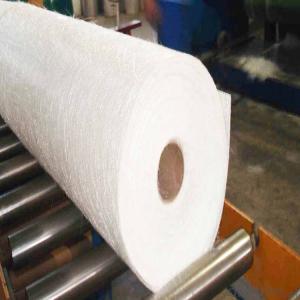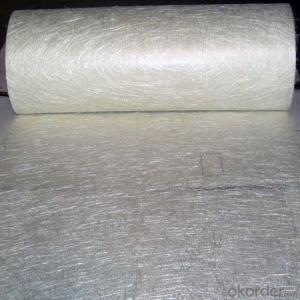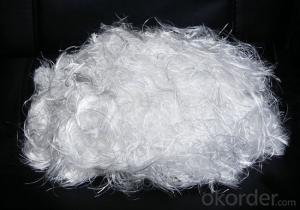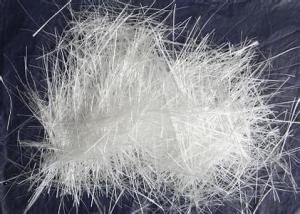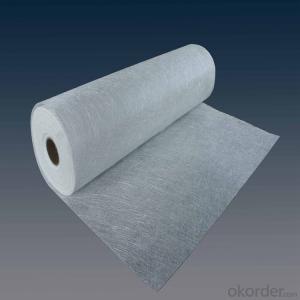Fiberglass Chopped Strand Mat Combination Mat Slide Mat
- Loading Port:
- China main port
- Payment Terms:
- TT OR LC
- Min Order Qty:
- 1 kg
- Supply Capability:
- 5000 kg/month
OKorder Service Pledge
OKorder Financial Service
You Might Also Like
Product Description:
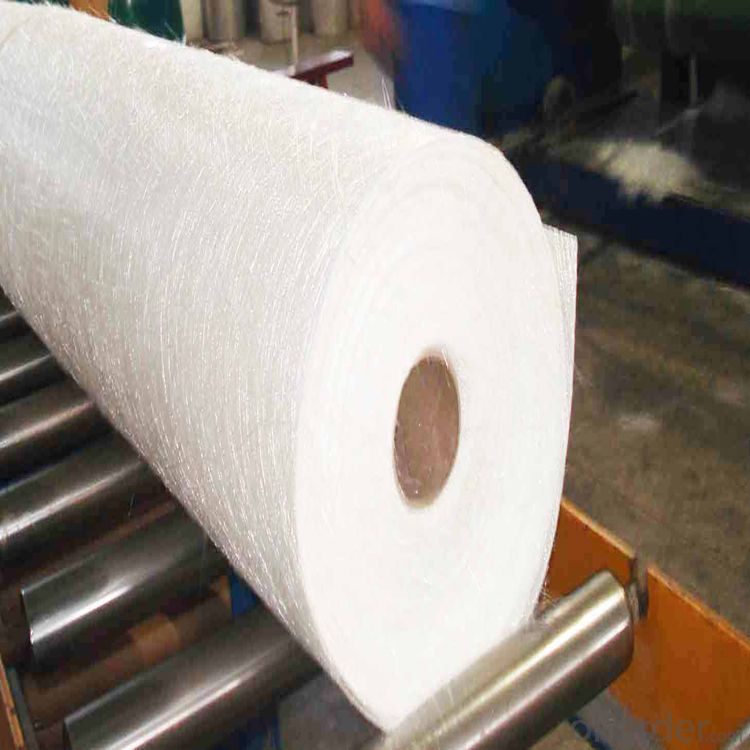
Surfacing Tissue mainly used in the surface layers of FRP products. It features even Fiber distribution, soft feel, level and smooth fiber surface, less glue content, quick resin soak and good pattern fitness. It can improve the product surface property on corrosion resistance, compressive strength, seepage resistance, and longer service life. It is also suitable for spraying; pattern pressing and other FRP pattern technology.
Surfacing Tissue mainly used in the surface layers of FRP products. It features even Fiber distribution, soft feel, level and smooth fiber surface, less glue content, quick resin soak and good pattern fitness. It can improve the product surface property on corrosion resistance, compressive strength, seepage resistance, and longer service life. It is also suitable for spraying; pattern pressing and other FRP pattern technology.
Product Features:
Fast breakdown in styrene
Fiber dispersed evenly
Low binder content
Superior acid corrosion resistance
Specifications:
Item | Over Density | Moisture Content | Chop Density | Polyester Yarn | Width |
(g/m2) | (%) | (g/m2) | (g/m2) | (mm) | |
EMK300 | 309.5 | ≤0.15 | 300 | 9.5 | 50-3300 |
EMK380 | 399 | 380 | 19 | ||
EMK450 | 459.5 | 450 | 9.5 | ||
EMK450 | 469 | 450 | 19 | ||
EMC0020 | 620.9 | 601.9 | 19 | ||
EMC0030 | 909.5 | 900 | 9.5 |
Product Packaging:
Each Surface Tissue is wound onto a paper tube which has an inside diameter of 76mm and the mat roll has a diameter of 330mm. The mat roll is wrapped up with plastic film,and then packed in a cardboard box or wrapped up with kraft paper. The rolls can be vertically or horizontally placed. For transportation, the rolls can be loaded into a cantainer directly or on pallets.
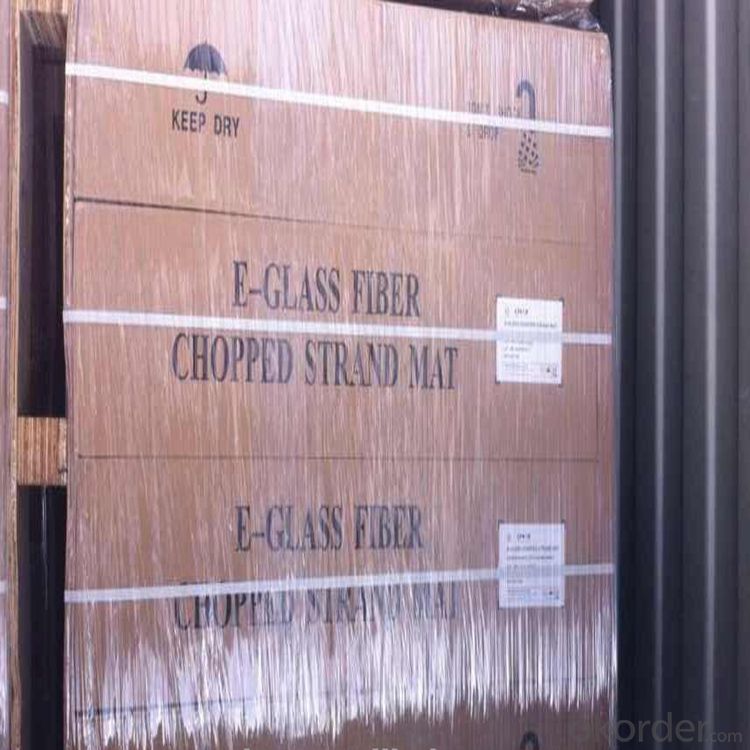
Product Storage:
Unless otherwise specified, Chopped Strand Mat should be stored in a dry, cool and rain-proof area. It is recommended that the room temperature and humidity should be always maintained at 15℃~35℃ and 50%~75% respectively.
Company Information
CNBM (China National Building Material) Group is the largest comprehensive building materials group in China that in integrate scientific research, manufacturing and logistics into one entity. The largest building materials and equipment specialists in China. Upon State Council approval, today CNBM owned more than 300 subordinate manufacturing factories and servicing companies. There are 6 fully owned public listed companies and 11 partially owned with substantial shares public listed companies. In many of these fields, CNBM is playing the leading role in the building industry in the country.

- Q:How does the diameter of the chopped strand affect its performance?
- The diameter of the chopped strand plays a significant role in determining its performance. A smaller diameter typically results in improved performance characteristics, such as increased tensile strength and better adhesion properties. Firstly, a smaller diameter chopped strand provides a higher surface area-to-volume ratio. This increased surface area allows for better bonding with the resin matrix in composite materials, leading to enhanced mechanical properties. The smaller diameter also promotes better resin penetration, ensuring a more uniform distribution of the resin throughout the composite structure. This, in turn, improves the overall strength and structural integrity of the final product. Additionally, a smaller diameter chopped strand can contribute to a higher fiber loading in the composite. This means that a greater number of strands can be incorporated into the resin matrix, resulting in a higher reinforcement content. This increased reinforcement content enhances the stiffness and strength of the composite material, making it more resistant to deformation and failure under load. Moreover, the smaller diameter also aids in achieving a more homogeneous dispersion of the chopped strands within the resin matrix. This uniform distribution of fibers helps to prevent the formation of voids or weak spots in the composite, ensuring consistent and reliable performance. It is important to note that the diameter of the chopped strand should be selected based on the specific application requirements. While a smaller diameter may offer better performance characteristics, it may also result in increased processing difficulty or higher cost. Therefore, a balance between the desired performance and practical considerations should be achieved when choosing the diameter of the chopped strand.
- Q:Can fiberglass chopped strand be used in acoustic insulation applications?
- Yes, fiberglass chopped strand can be used in acoustic insulation applications. Its fibrous composition helps absorb sound waves, reducing noise transmission and improving acoustics in various settings such as residential, commercial, and industrial buildings.
- Q:Can fiberglass chopped strand be used in the production of decorative items?
- Yes, fiberglass chopped strand can be used in the production of decorative items. Fiberglass chopped strand is a versatile material that can be easily molded into various shapes and sizes, making it ideal for creating decorative items. It is commonly used in the production of decorative objects such as figurines, sculptures, vases, and other aesthetically pleasing items. The chopped strand can be mixed with a resin or binder, and then molded or cast into the desired shape. It offers excellent strength and durability, making it suitable for long-lasting decorative pieces. Additionally, fiberglass chopped strand can be easily colored or painted, allowing for endless design possibilities. Overall, fiberglass chopped strand is a popular choice for manufacturers looking to produce decorative items that are not only visually appealing but also strong and durable.
- Q:Does fiberglass chopped strand improve the fire resistance of composite materials?
- Yes, fiberglass chopped strand can improve the fire resistance of composite materials. Fiberglass is known for its high melting point and low thermal conductivity, making it a suitable reinforcement material for enhancing fire resistance properties in composites. When added to a composite material, fiberglass chopped strand can act as a barrier, preventing the spread of flames and reducing the rate of heat transfer. Additionally, the use of fiberglass chopped strand can enhance the structural integrity of the composite during fire exposure, as it has a high strength-to-weight ratio. However, it is important to note that the fire resistance properties of a composite material also depend on other factors such as the resin matrix used, the manufacturing process, and the overall composition of the composite.
- Q:Is fiberglass chopped strand compatible with polypropylene resin?
- Yes, fiberglass chopped strand is compatible with polypropylene resin.
- Q:What types of resins can be used with fiberglass chopped strand?
- There are various types of resins that can be used with fiberglass chopped strand, including polyester resin, epoxy resin, and vinyl ester resin. These resins offer different properties and characteristics, allowing for versatility in different applications and desired outcomes.
- Q:Can fiberglass chopped strand be used in medical applications?
- Yes, fiberglass chopped strand can be used in certain medical applications. It is commonly used as a reinforcing material in composites used for medical devices such as prosthetics, orthopedic implants, and surgical instruments. However, its specific use will depend on the requirements and regulations of each individual medical application.
- Q:Is fiberglass chopped strand resistant to heat?
- Yes, fiberglass chopped strand is generally resistant to heat. Fiberglass is made from a combination of glass fibers and a thermosetting resin, usually polyester or epoxy. These materials have a high melting point and can withstand high temperatures without melting or deforming. However, it is important to note that the heat resistance of fiberglass can vary depending on the specific type and composition of the material. Some fiberglass products are designed to withstand higher temperatures than others. It is always recommended to check the manufacturer's specifications and guidelines for the specific fiberglass chopped strand product to determine its heat resistance capabilities.
- Q:How does the moisture absorption of chopped strand affect its performance?
- The performance of chopped strand can be significantly affected by its ability to absorb moisture. Chopped strand is typically composed of glass fibers that have been cut into shorter lengths. These fibers are commonly used as reinforcement material in various composite applications, including plastics, concrete, and fiberglass. When moisture is absorbed by chopped strand, it can have a negative impact on its mechanical properties. The moisture can degrade the integrity of the glass fibers, causing them to weaken and become brittle. As a result, the composite material may experience a loss of tensile strength, stiffness, and overall durability. In addition, the presence of moisture in chopped strand can also result in dimensional instability. As the fibers absorb water, they may expand, leading to swelling or warping of the composite material. This can affect the accuracy and stability of the final product, making it unsuitable for applications that require precise measurements or tight tolerances. Moreover, the absorption of moisture can create an environment conducive to the growth of microorganisms, such as mold or bacteria, within the composite material. This can compromise the structural integrity of the material and lead to degradation over time. To address these issues, manufacturers often take measures to minimize the moisture absorption in chopped strand. This can involve the application of surface treatments or coatings to make the fibers more hydrophobic, or the incorporation of moisture-resistant additives into the composite matrix. Proper handling, storage, and transportation practices are also crucial in preventing moisture absorption in chopped strand. In conclusion, the moisture absorption of chopped strand is a critical factor that significantly impacts its performance. It can lead to reduced mechanical properties, dimensional instability, and potential degradation due to microbial growth. Therefore, it is important to consider the moisture resistance and management of chopped strand when selecting and using it in composite applications.
- Q:How does the fiber diameter affect the performance of fiberglass chopped strand?
- The performance of fiberglass chopped strand is heavily influenced by the diameter of the fibers. The mechanical properties, including strength, stiffness, and impact resistance, are directly impacted by the diameter. Higher strength and stiffness are typically associated with smaller fiber diameters. This is due to the fact that smaller diameters allow for a greater number of fibers to be included in a given volume. As a result, load transfer becomes more efficient, leading to increased overall strength. Additionally, smaller diameter fibers tend to have fewer defects, such as voids or impurities, which can weaken the material. Furthermore, a smaller diameter also improves the bonding between the fibers and the matrix material, resulting in an enhanced composite performance. The larger surface area of the smaller fibers allows for better adhesion with the matrix, leading to improved load transfer and mechanical properties. It is important to note, however, that there is an optimal range of fiber diameter for specific applications. If the diameter becomes too small, it can be challenging to handle and process, resulting in difficulties achieving uniform distribution and effective reinforcement within the matrix. Conversely, if the diameter becomes too large, it may result in less efficient use of the material and reduced mechanical properties. In conclusion, the fiber diameter of fiberglass chopped strand is a critical factor in determining its performance. Smaller diameters generally improve strength, stiffness, and bonding while reducing defects. However, it is important to consider the optimal range for each application to ensure ease of processing and optimal reinforcement.
1. Manufacturer Overview |
|
|---|---|
| Location | |
| Year Established | |
| Annual Output Value | |
| Main Markets | |
| Company Certifications | |
2. Manufacturer Certificates |
|
|---|---|
| a) Certification Name | |
| Range | |
| Reference | |
| Validity Period | |
3. Manufacturer Capability |
|
|---|---|
| a)Trade Capacity | |
| Nearest Port | |
| Export Percentage | |
| No.of Employees in Trade Department | |
| Language Spoken: | |
| b)Factory Information | |
| Factory Size: | |
| No. of Production Lines | |
| Contract Manufacturing | |
| Product Price Range | |
Send your message to us
Fiberglass Chopped Strand Mat Combination Mat Slide Mat
- Loading Port:
- China main port
- Payment Terms:
- TT OR LC
- Min Order Qty:
- 1 kg
- Supply Capability:
- 5000 kg/month
OKorder Service Pledge
OKorder Financial Service
Similar products
New products
Hot products
Related keywords
